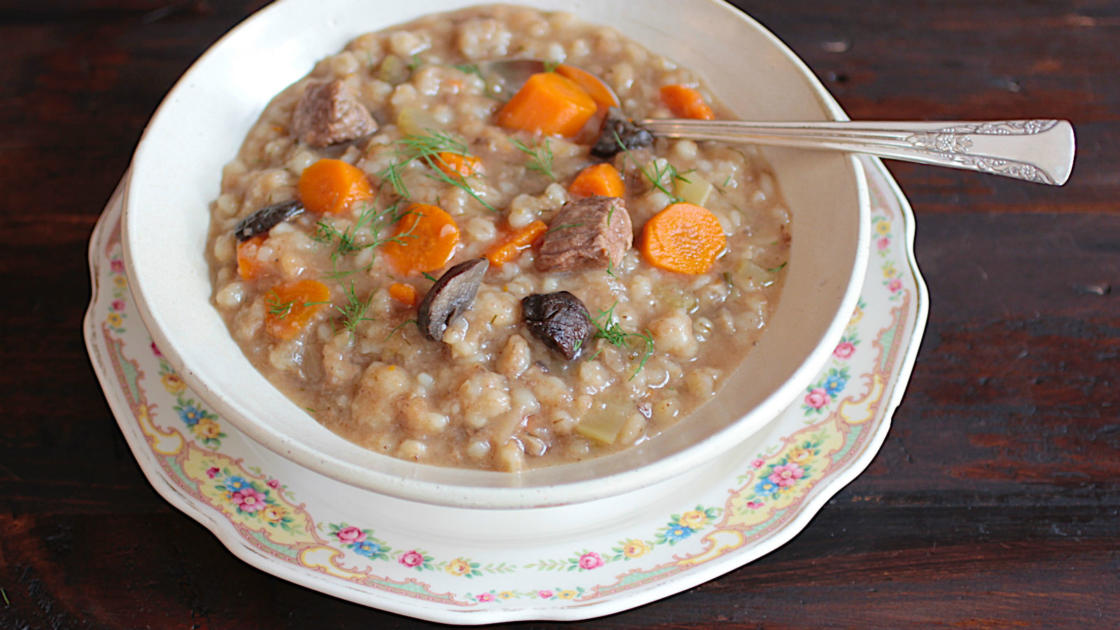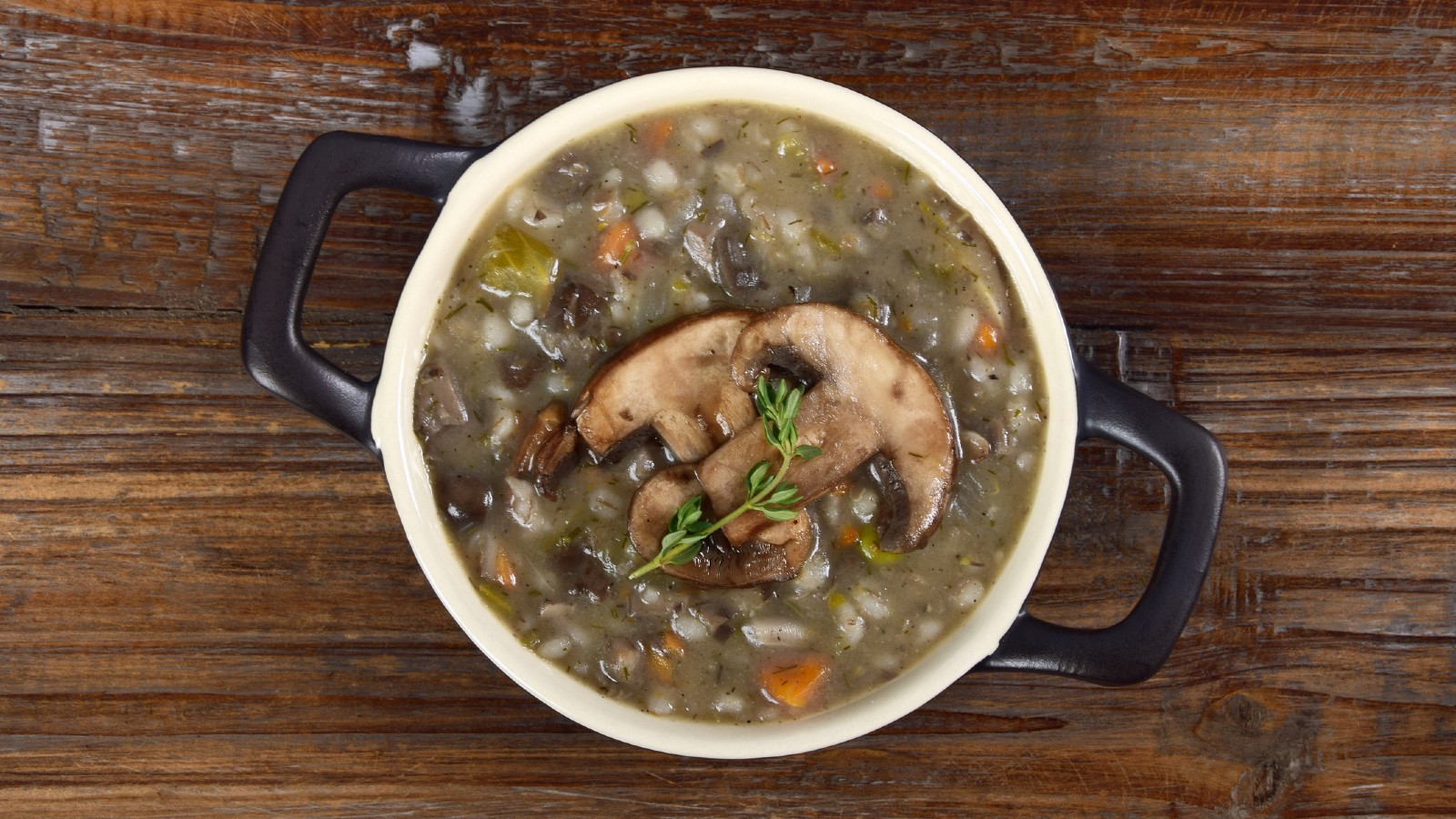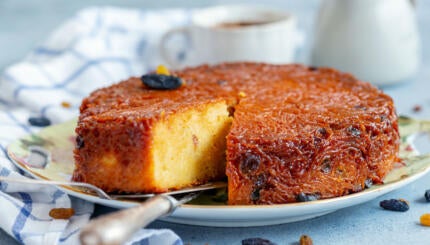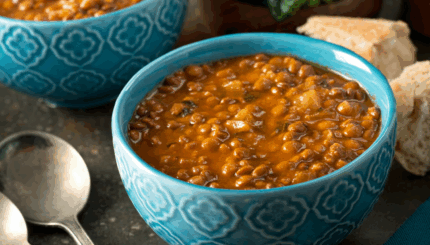Ask anyone to name a classic Ashkenazi soup and, odds are, they will say chicken soup (with or without matzah balls). But krupnik was a much more prevalent and significant soup for the Jews of Eastern Europe. Chicken soup (sometimes referred to in Yiddish as goldene yoich — golden broth) was a festive dish for Shabbat; krupnik was daily fare.
So what is krupnik, anyway? It’s a simple and hearty Polish soup made from barley and various root vegetables. It was one of the standards in my house growing up — the smell of a fresh-cooked pot when I got home from school meant a delicious bowl for dinner, and many containers secreted away in the freezer for the coming weeks. But we never called by its European name; my mom always referred to it as Mushroom-Barley Soup. In our house, the two ingredients were equally essential, though according to a number of (non-Jewish) Polish versions online, the mushrooms seem to be less ubiquitous, though certainly not peculiar.
Perhaps this difference was due to the strong affinity the Jews of Eastern Europe had for their prized mushrooms. They were rich and nutritious, but best of all, they grew abundantly in local wooded areas — a free food source! Thus, all mushrooms the Ashkenazim ate were “wild mushrooms,” with lots more flavor than the farmed mushrooms we usually eat today. The fresh-picked mushrooms would be home-dried on the stovetop, preserving them for the whole year. So if you want to take your soup to the next level, good quality dried mushrooms will go a long way!
In his Hebrew-language cookbook Schmaltz, Ashkenazi food expert Shmil Holland points out that the lumber trade was a Jewish profession in Eastern Europe, bringing Jews into closer contact with this luscious food source. That being said, he suggests that Jews generally didn’t know how to differentiate between safe and poisonous varieties, and often bought mushrooms from Gentiles. Though this contrasts with the idea of them being free food, one explanation might be Holland’s greater familiarity with a later era in Eastern Europe (after the exodus to America). Perhaps the knowledge had been lost among Ashkenazim by then.
The Nosher celebrates the traditions and recipes that have brought Jews together for centuries. Donate today to keep The Nosher's stories and recipes accessible to all.

Whether or not the krupnik features mushrooms, without barley it isn’t really a krupnik. The name itself comes from an archaic word for barley. I’ve seen some recipes calling for buckwheat instead, and while this variation might be a delicious soup (and perhaps even a different traditional one), it can’t authentically be called krupnik.
While this soup is clearly Polish in origin, and is common in other Slavic territories, the Jewish version is distinctive. The aforementioned prominence of mushrooms is one example. Another is the choice of meat for the soup.
In many parts of Eastern Europe, krupnik became the literal daily food of the masses. So the Jewish krupnik would frequently be made with no meat at all, allowing it to remain pareve and not interfere with the consumption of dairy foods. While non-Jews might also make a vegetarian version if they couldn’t afford meat, most Polish recipes stress the importance of both meat and bones to create the proper consistency. Still, Jews would always make their krupnik with meat for Friday night, to properly honor the Shabbat. In a uniquely Jewish twist, cooks in one Belarus town were known to put kishke into their Shabbat krupnik.
Polish krupnik recipes largely feature pork, chicken, or a combination of both. The former was clearly out for Jews, and the latter seems to have never garnered serious popularity in Ashkenazi krupnik. Beef seems to have always been the meat of choice. Beef was expensive and not consumed on a daily basis, but it remained beloved to Jews and thus held pride of place in their cuisine, especially eaten on Shabbat. Cholent was also always made with beef.
This seems to stem from an interesting quirk of history. Following the 14th-century Black Death in Europe, when 30-60% of the population died, there was an abundance of available grazing land, and significantly fewer people competing for the same resources. Thus, a 200-year beef surplus ensued, with prices dropping consequently. For the first time in history, beef was a largely affordable protein.
When beef prices rose again, in the mid-1500s, Ashkenazim had already gotten a taste for it, and didn’t want to give it up. It remained embedded in their consciousness as the best-of-the-best meat, and thus would be reserved for Shabbat. For any soup or stew, better to include a beef bone with the tiniest bit of flesh attached than a larger piece of some other meat.
Thus, krupnik gained a special position in Ashkenazi cuisine, as the ultimate heimish comfort food. As the Yiddish proverb goes, quoted in this entertaining video featuring food writer and Yiddishist Eve Jochnowitz: “I’d rather have krupnik at home than roast duck with strangers.”
Craving mushroom barley soup? Try this recipe.



